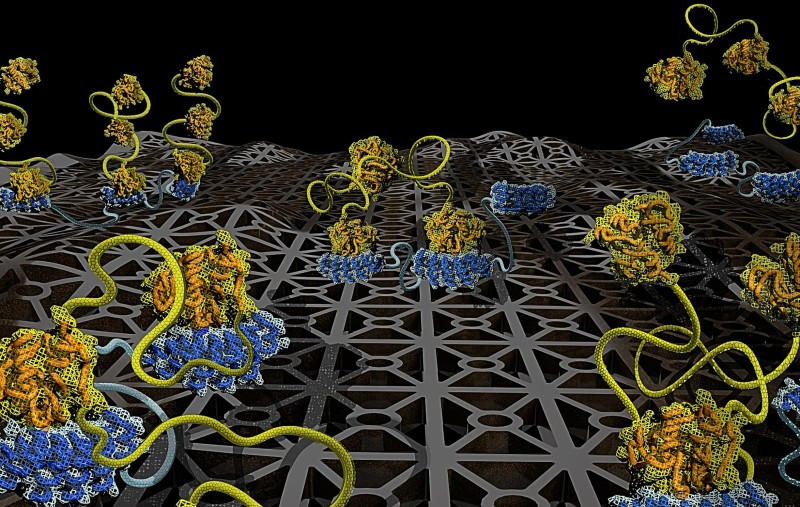Most medicines work by binding to and blocking the effect of disease-causing molecules. Now to accelerate the identification of potential new medicines, bioengineers have created a computer model that mimics the way molecules bind.
Developing new medicines is a complex endeavor that involves identifying candidate compounds based on their known properties and testing them for the desired activity in animal models or cellular systems that mimic the disease. Although pharmaceutical developers try to test only the most promising candidates, the trial and error aspect of the process can be extremely time consuming and expensive.
In an effort to streamline the identification of compounds most likely to bind to a disease target, a team of biomedical engineers at the University of Minnesota’s College of Science and Engineering has developed a mathematical computer model that predicts how molecules with two or more binding sites will interact with each other and how changes in those structures could enhance or reduce binding.
The work was led by senior author Casim A. Sarkar, Ph. D., Associate Professor, Department of Biomedical Engineering, University of Minnesota, and is reported in the December 17 issue of the Proceedings of the National Academy of Sciences1.
“Being able to test what molecules will do “in silico” — in a computer model — rather than in a test tube has become more feasible as computer modelling technologies have become more powerful,” explained David Rampulla, Ph.D., director of the NIBIB Program in Delivery Systems and Devices for Drugs and Biologics. “This work by the Minnesota team uses state-of-the-art computational modelling methods and is a major step toward more rapid and significantly less expensive drug development.”
The computer model focuses on molecules that have two or three binding sites on their surface capable of interacting with other molecules with two or three binding sites. The model also incorporates the binding strength of each site, the size of each site, and the rigidity or flexibility of each molecule between its interacting sites, all of which can alter the molecular binding properties.
The computational model thus allows researchers to virtually introduce changes in the molecules to see how they affect binding properties. With this capability, researchers can quickly zero in on precise molecular structures and parameters that a new medicine will need to be a good candidate to test in an animal model against a specific disease.
“Confirmation of our model’s predictions in laboratory experiments gives us confidence that the model uses rules that are accurate and applicable to a range of molecular medicines including proteins, DNA, and small molecules,” explains Sarkar.
Next, the team plans to use their computational model to develop a web-based app that other researchers can use to speed the development of new therapies for diseases.
The work was supported by the National Institute of Biomedical Imaging and Bioengineering (grant R21EB022258), the National Institute of General Medical Sciences (grant R01GM113985), a shared instrument grant from the Office of Research Infrastructure Programs at the National Institutes of Health (S10OD021539), and the Higher Education Excellence Program of the Ministry of Human Capacities in Biotechnology at the Budapest University of Technology and Economics.
Original post https://alertarticles.info
